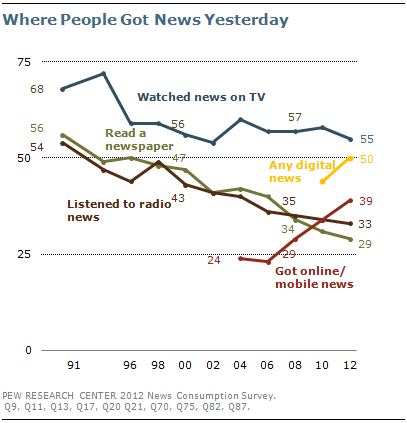How to Write SEO-Friendly Titles
I scroll through my Twitter feed only a few times a week, and I quickly skim Google news and Search Engine Land’s “Day In Search” on a semi-irregular basis. I delete emails more often than I read them. If a headline doesn’t catch my interest in .0001 seconds, I’m not reading it.
After all, I’m just as busy as the next consumer and I don’t have time to read every story and update. How do you get your news? Chances are, you’re like me. Maybe you listen to the news when you’re driving to work, or the 6 o’clock news when you’re at the gym.
…Did I already lose you in my introduction?
Even though your eyes are glazing over and you’re second-guessing why you started reading this blog post, don’t you think your customers feel the same way about the content you put out? Even if you are THE thought-leader in your industry, it doesn’t change how busy or news-inundated your customers are.
So, what are you telling me?
If you can master the art of writing a really awesome headline and title tag for your article, that’s half the battle. Titles are one of the most important aspects of SEO, User Experience (UX), and Conversion Rate Optimization (CRO). Even if you’re writing great title tags (headlines), tweaking them could result in greater search visibility, improved user experience, and increased conversions!
Here’s what I’m going to cover in this article:
- Use keywords, but not at the expense of the user experience
- Mirror user intent for CRO
- Be social-friendly
Then we will look at how traditional media has changed into digital content, and how this affects titles and headlines.
Hang with me? Ok.

Keywords Must Be Present (But Never Sacrifice UX)
For instance, pithy phrases and titles are great as long as they contain keywords. I recently saw an infographic entitled: “Men and Women Dig on Digs Differently”. – A better SEO-friendly title could have been “The Gender Split in Buying a House” or “What Men and Women Each Want in a House.” “Digs” doesn’t have nearly as much search volume as “house” or “home”.
For instance, here is the search traffic for the following keywords:
- “Digs” – 6,600
- “Real Estate” – 2,740,000
- “Home” – 1,500,000
- “House” – 1,000,000
- “Buying a House” – 33,100 vs. “Buying a Home” – 3,600
Even related terms like “house” and “home” can have very different search volume! Of course, we also want to look at user intent and competition. We would not target these terms by themselves, but we still want to incorporate them into long-tail keyword searches.
Mirror User Intent for CRO
When someone enters a query (aka “keyword”) into a search engine, they expect to see that keyword repeatedly throughout their interaction with the search results and the sites displayed in those search results.
So, if a searcher wants to know how to “increase leads from social”, then your page title should include “Increase Leads” and “Social” in a way that also, and most importantly, captures that searcher’s intent: lead gen from social media. If the searcher likes your page title and meta description in search, and they click on your page, then the headline of your page should continue to carry the messaging, or “scent” – in CRO, that the searcher is following. If your headline doesn’t mention lead gen from social, then the searcher will likely leave your site and click on the next result on the search page. This plays into two metrics used by search engines to determine where a site should rank: Click-Back Rate and Dwell Time. If people are coming back to a search page quickly, this means they have a low Dwell Time on your site. If you have a low Dwell Time and high Click Back Rate, then search engines will decide your result isn’t relevant to their searchers’ intentions, and will move you down the results.
This is a main reason that SEO cannot target “peripheral” phrases the same way PPC can. You cannot use a related term to get someone’s attention in search in the hopes you can sell them on what you actually have once they are on your page. This will make you lose position in search results as fast as any other SPAM tactic out there.
Be Social-Friendly
Another thing to consider is whether the title is optimized for social. Long titles are often not social-friendly and can get cut off when shared over social channels. Twitter’s limit is 140 characters, but you want to leave room for the article link, hashtags, and anyone who retweets it, or adds “via @yourbrand”. This is not a hard and fast rule, and people break it all the time, but it’s something to keep in mind so that – at the very least – the most important part of the title is in the first 60 characters, or so.
Keep In Mind – Traditional News vs. Digital News
News consumption has changed dramatically over the last decade in terms of moving away from TV, print, and radio to digital. It has also moved from simply reading news in any form to receiving news according to what is being shared and discussed most, often via social channels.
 “Online and digital news consumption…continues to increase, with many more people now getting news on cell phones, tablets or other mobile platforms. And perhaps the most dramatic change in the news environment has been the rise of social networking sites. The percentage of Americans saying they saw news or news headlines on a social networking site yesterday has doubled – from 9% to 19% – since 2010. Among adults younger than age 30, as many saw news on a social networking site the previous day (33%) as saw any television news (34%), with just 13% having read a newspaper either in print or digital form.” via People-Press.org (2012)
“Online and digital news consumption…continues to increase, with many more people now getting news on cell phones, tablets or other mobile platforms. And perhaps the most dramatic change in the news environment has been the rise of social networking sites. The percentage of Americans saying they saw news or news headlines on a social networking site yesterday has doubled – from 9% to 19% – since 2010. Among adults younger than age 30, as many saw news on a social networking site the previous day (33%) as saw any television news (34%), with just 13% having read a newspaper either in print or digital form.” via People-Press.org (2012)
This is also happening at the same time that the world is becoming a smaller place, and news from everywhere is at anyone’s fingertips. Author, and philosopher, Terence McKenna coined the term “Novelty Theory”, which is defined as: “…newness, density of connection or increased interconnectivity.”
I believe this very clearly articulates what the average 21st century American deals with. Something “new” is being introduced every second via emails, text messages, phone calls, TV shows, Pinterest, Facebook, Skype, Twitter, Google+, and any other media that an individual chooses to consume, or allows to send them “push notifications” on their smart phones. Add to that the number of people an individual can “know” within their social networks, and how the “new” items those individuals can find and share compound the number of “new” items a single person would otherwise be introduced to in a single day. This entire deluge of information means you are fighting for visual space, and well as meaningful relevance to your audience. Titles and headlines, as well as imagery, are the most prominent elements available to accomplish this goal.
Remember How Headlines are Changing
Historically, news titles were longer because they lacked social media and search engine optimization constraints, and they summarized the entire article in a few words. People knew what to expect, and they continued reading because they were interested. Titles that are shorter, and more enticing, have become the norm in the digital age to standout in search results, and Facebook and Twitter feeds, and are designed to drive up click through rates and improve rankings.
For instance, this article, “Google’s Matt Cutts Gives SEO Advice For Times When Your Products Go Out Of Stock” is a great title. It’s informative and it’ll catch your eye. But, it’s 81 characters long, so in search results it is truncated, and the last portion would likely be lost. Search engines limit titles to 65-70 characters, and anything beyond that is reduced to an ellipsis. If you turned this into the Twitter post in the image below, it might limit your followers’ abilities to add other “@’s” or comments.
However, I only need to scroll through headlines to get the gist of world news. “Putin formally recognizes Crimea as an independent state,” is a recent headline. I don’t need to open the article to get the news. Similarly, you want to ensure that your customers aren’t getting all the information they need in just the headline. Using a hook or bait will ensure higher click-through rates for your content.
Start by writing one title. Then write an additional 5-10. Tweak them, and let a colleague proof them and come up with their own ideas. This is especially helpful if you’re the one who wrote the article – maybe they got something different out of the article and have other suggestions for you.
Even after you’ve decided on one title, consider using some of the extra titles to promote your content on social media – perhaps as twitter variations. Test them and see which ones get the highest number of shares.
